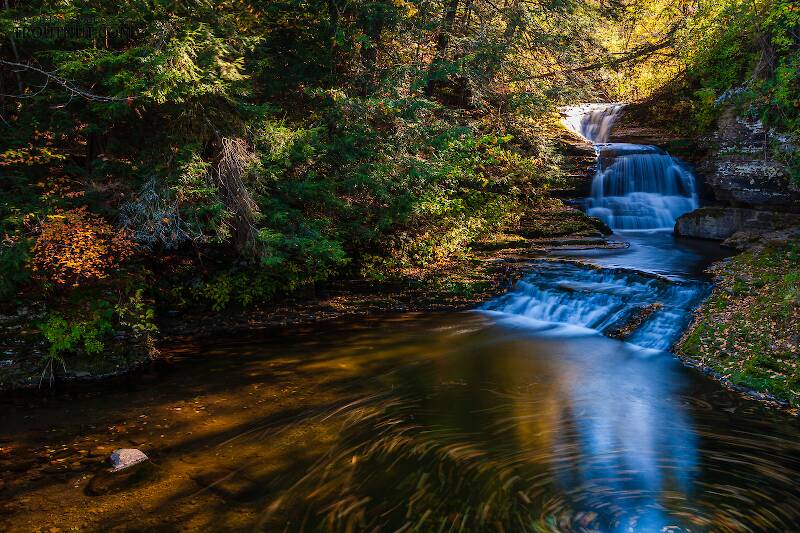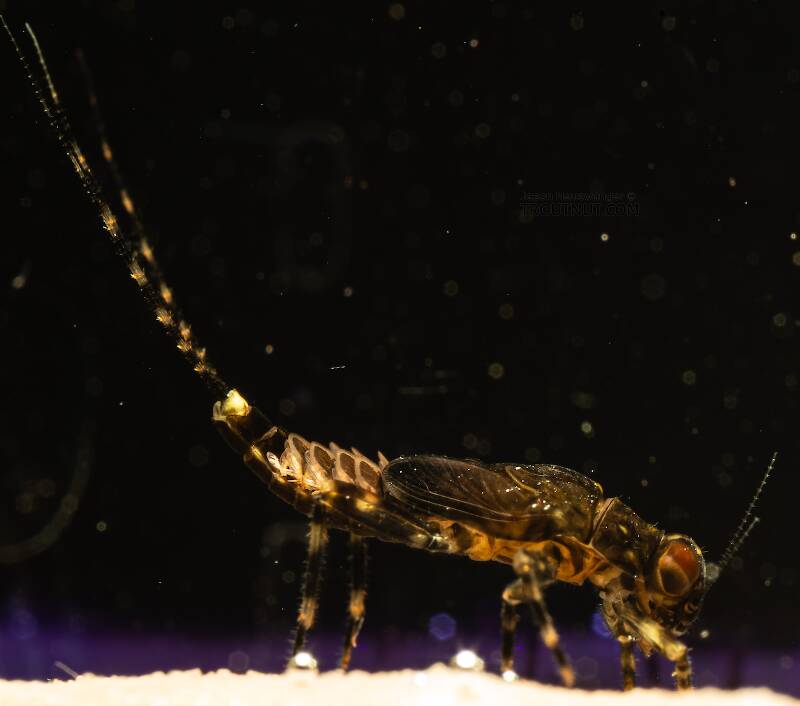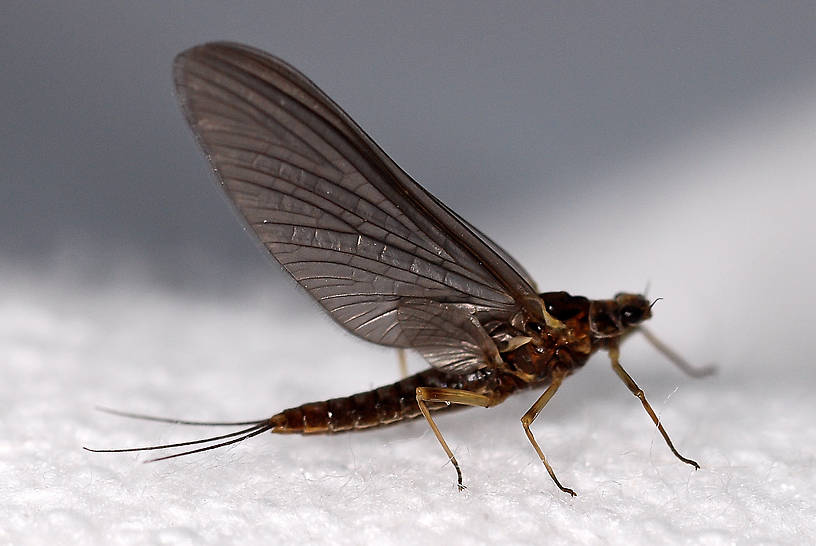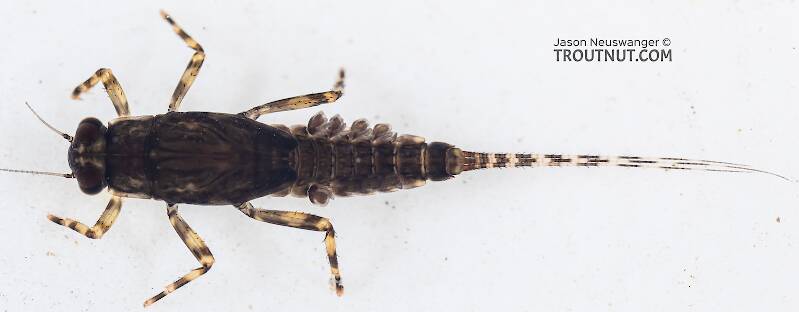
Hex Mayflies
Hexagenia limbata
The famous nocturnal Hex hatch of the Midwest (and a few other lucky locations) stirs to the surface mythically large brown trout that only touch streamers for the rest of the year.
Featured on the forum

This dun emerged from a mature nymph on my desk. Unfortunately its wings didn't perfectly dry out.

Troutnut is a project started in 2003 by salmonid ecologist Jason "Troutnut" Neuswanger to help anglers and
fly tyers unabashedly embrace the entomological side of the sport. Learn more about Troutnut or
support the project for an enhanced experience here.
Little Dark Hendricksons
Like most common names,"Little Dark Hendrickson" can refer to more than one taxon. They're previewed below, along with 6 specimens. For more detail click through to the scientific names.
Mayfly Species Serratella levis
These are often called Little Dark Hendricksons.
Mayfly Species Serratella micheneri
These are often called Little Dark Hendricksons.
See 2 more specimens...
Mayfly Species Ephemerella needhami
These are often called Little Dark Hendricksons.
This small and slightly noteworthy mayfly appears during the finest hours of the year. Ernest Schwiebert describes an Ephemerella needhami day in Matching the Hatch:
I have not fished a needhami emergence, but the exquisite nymphs show up often (though never abundantly) in my samples.
"It was a wonderul morning, with a sky of indescribable blue and big, clean-looking cumulus clouds, and the water was sparkling and alive. You have seen the water with that lively look; you have also seen it dead and uninviting in a way that dampens the enthusiasm the moment you wade out into the current."
I have not fished a needhami emergence, but the exquisite nymphs show up often (though never abundantly) in my samples.
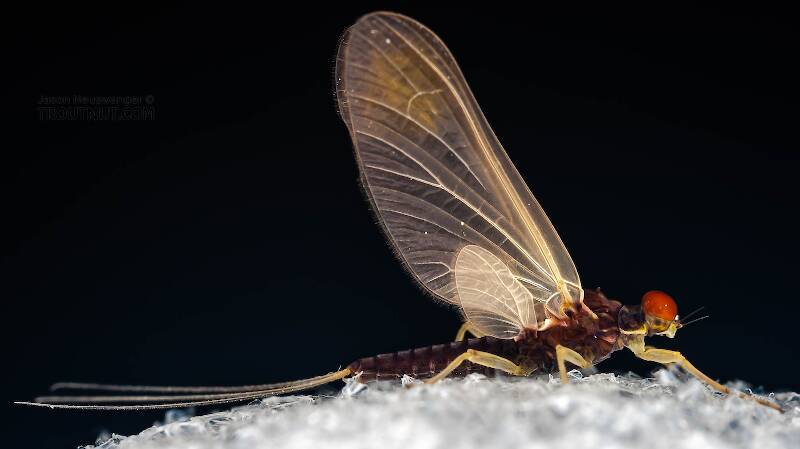
See the comments for an interesting discussion of the identification of this dun.
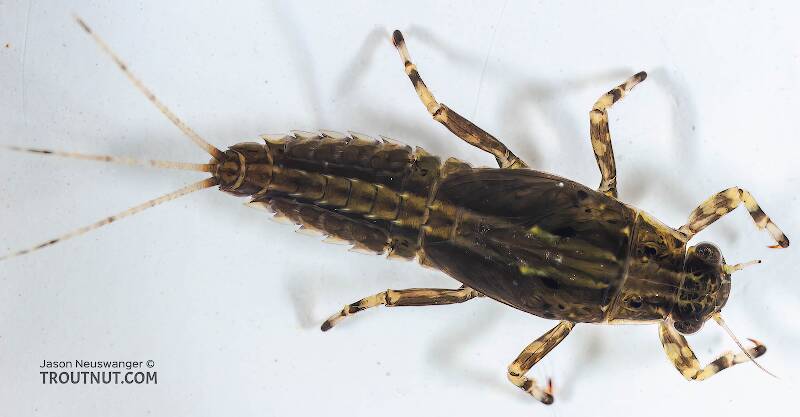
I photographed three strange striped Ephemerella nymphs from the same trip on the same river: this one, a brown one, and a very very striped one. I have tentatively put them all in Ephemerella needhami for now.
See 7 more specimens...
Mayfly Species Matriella teresa
These are often called Little Dark Hendricksons.
This is the only species of Matriella reported in North America. It has a western disribution and is of limited importance to anglers.
Mayfly Species Teloganopsis deficiens
These are sometimes called Little Dark Hendricksons.
Anglers in western Wisconsin, where these little flies hatch in good numbers on summer rivers, have termed them "Darth Vaders" because of the very dark color of their wings.
Until recently, this species was known as Serratella deficiens.
Until recently, this species was known as Serratella deficiens.
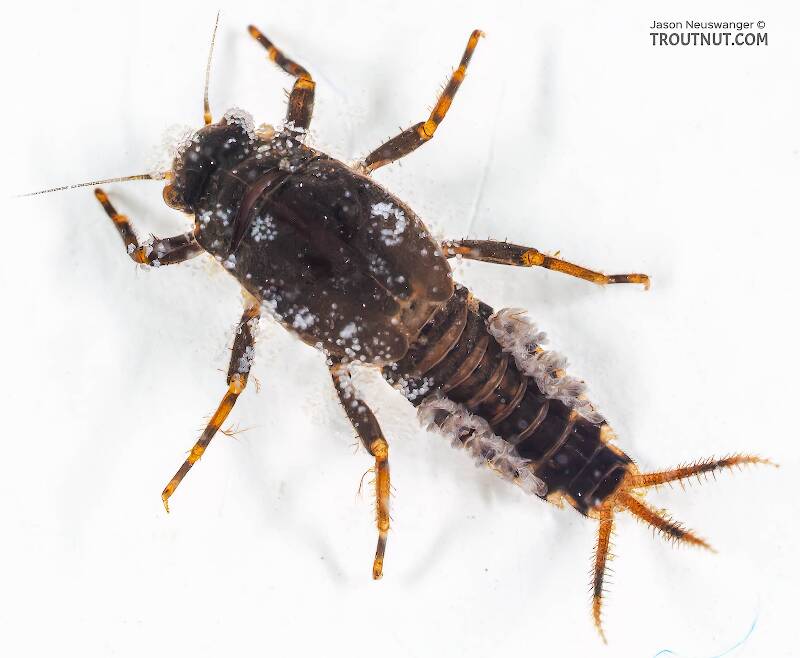
This nymph has tiny, barely detectable tubercles on its abdominal segments, and I could not find the maxillary palpi. I tentatively guessed that it is Serratella deficiens back when that was a thing; the species is now known as Teloganopsis deficiens. One of the key characteristics, tarsal claws with a subapical denticle being larger than the preceding denticles, seems to be visible in some of the pictures.
Mayfly Species Ephemerella tibialis
These are sometimes called Little Dark Hendricksons.
Ehhemerella tibialis (Little Western Red Quill, Little Western Dark Hendrickson) is a common western species that can be very important at times. It is perhaps also one of the most confusing species. Unlike it's western generic counterparts the species is described as dark and their females produce dark eggs. Until recently, it was classified in the Serratella genus with species that share these traits. Regardless, it is the only small, dark ephemerellid the western angler is likely to find important. Favorite patterns used for size 18 Pale Morning Dun hatches tied in eastern Dark Hendrickson colors should be the ticket.
As with many of it's sister species it is widely adaptable and may be variable in its appearance. Scientific literature and many angling sources describe it as a small dark mayfly. Not everybody agrees. Ralph Cutter, West Coast author of several angler/entomology books and articles describes it in Sierra Trout Guide as a much larger pale mayfly and dubs it the Creamy Orange Dun. He also mentions the nymph as being easy to recognize by the faint dorsal stripe running down its back and its often fiery brownish red color. These descriptions also match a variation of the ubiquitous and common Ephemerella excrucians.
As with many of it's sister species it is widely adaptable and may be variable in its appearance. Scientific literature and many angling sources describe it as a small dark mayfly. Not everybody agrees. Ralph Cutter, West Coast author of several angler/entomology books and articles describes it in Sierra Trout Guide as a much larger pale mayfly and dubs it the Creamy Orange Dun. He also mentions the nymph as being easy to recognize by the faint dorsal stripe running down its back and its often fiery brownish red color. These descriptions also match a variation of the ubiquitous and common Ephemerella excrucians.
See 4 more specimens...
Mayfly Species Serratella serrata
These are very rarely called Little Dark Hendricksons.
This locally important species is rarely mentioned in fly fishing literature, and what little information is given is identical to that for Teloganopsis deficiens. Knopp and Cormier say both species can produce good hatches.
References
- Knopp, Malcolm and Robert Cormier. 1997. Mayflies: An Angler's Study of Trout Water Ephemeroptera . The Lyons Press.
- Schwiebert, Ernest G. 1955. Matching the Hatch. MacMillan Publishing Company.

